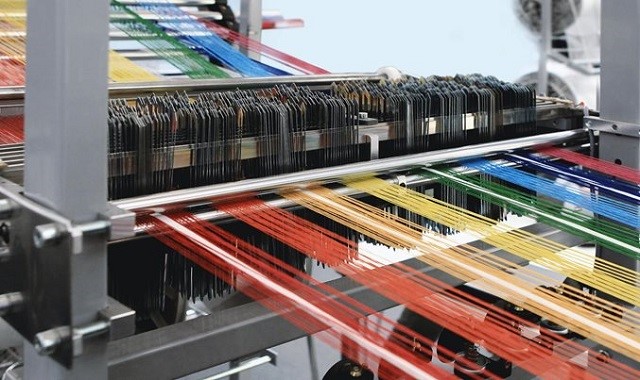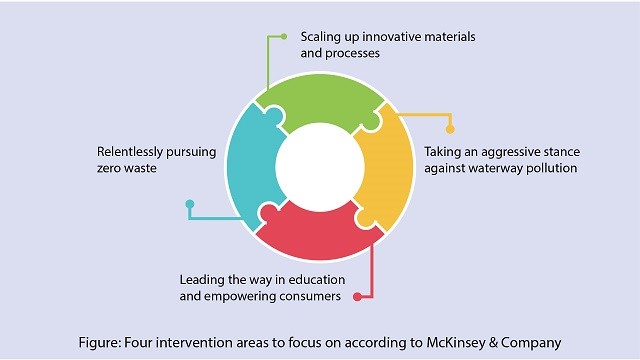
Ảnh: McKinsey and Company
Climate change is a widely discussed and thought-provoking topic in the field of sustainable fashion. However, according to McKinsey & Company - a well-known American management consulting firm - biodiversity loss is another more important aspect that needs to be considered, discussed and cared for in order to find solutions. reality. Since this biodiversity loss is declining faster than ever in the history of human development, this trend must be decelerated as soon as possible.
Why think of 'biodiversity' in the midst of a pandemic?
Even in the midst of the Covid-19 pandemic, sustainability remains one of the most common issues of concern to consumers, investors and regulators, if not the most. Consumer sentiment shows that 2/3 of them are more aware of climate change and this has been even more important to them since the Covid-19 pandemic. However, the McKinsey side also said that climate change is not the only topic discussed.
McKinsey wrote, "While most of the articles are about the fashion industry's impact on climate change, little is known and mentioned about the industry's heavy impact on biodiversity." Why is biodiversity so important? That is, we have always been closely linked with biodiversity with food, energy, air quality, fresh water, soil, and climate regulation. But unfortunately, biodiversity is declining at a faster rate than ever before.
"One million species, about 12% to 20% of all estimated species on earth, both underwater and terrestrial, are threatened with extinction," McKinsey said. The current rate of global biodiversity loss is estimated to be 100 to 1000 times higher than the conventional rate of extinction and is expected to increase in the coming years.
Who is responsible for this diversity loss?
According to this global consulting firm, the apparel industry has a major impact on biodiversity loss. “Apparel supply chains are directly related to land degradation, the transformation of natural ecosystems, and water pollution,” the company wrote. But industries also come up with ideas and gradually work to fix the damage they've caused.
What is the solution?
In an article published on July 23, the company looked at assessing the entities and organizations in the garment industry that contribute the most to biodiversity loss, options for companies to strategically mitigate that loss and the actions brands can take to work to restore the industry's biodiversity.
Based on its analysis, the company has identified five sub-sectors that contribute the most to the loss of biodiversity in the apparel sector. These are: cotton farming, natural wood fibers / man-made cellulosic fibers (MMCFs), dyeing and processing of textile products, microplastics and waste.

To strategically minimize losses, they have recommended brands to implement the following suggestions:
Innovative materials and production process upgrades : Cotton - a seemingly innocent fiber that is negatively affected by its association with pesticides, water consumption and pollution; not taking into account synthetic materials and artificial cellulose. That is why better and more sustainable alternatives have to be in place. More investment and innovation is needed to implement more sustainable processes.
Hold a positive stance against water pollution : Brands must also take a "positive stance" against water pollution. Because many suppliers in developing countries is a lack of resources and knowledge in monitoring the use of chemicals should at least they should comply with the provisions of Zero Discharge of Hazardous Chemicals (No discharge of hazardous chemicals insurance), manufacturing restricted substances List (ZDHC MRSL) "list of restricted substances in manufacturing (ZDHC MRSL) and wastewater Guidelines (Guidelines on waste water treatment), these are regulations on the use of chemicals toxic and waste water discharge.
Take the lead in consumer awareness and empowerment : Brands can help raise consumer awareness of their responsibility to minimize impacts on biodiversity loss. Modifications in consumer behavior and choices can yield significant results. Using a garment over 9 months can reduce carbon-related emissions by 27%, water by 33%, and waste by 22%, according to a 2012 Natural Resources & Waste Action Program study.
Constantly pursuing the goal of "No Waste" : To protect biodiversity, one of the best measures for the garment industry is to stop making too many clothes. Although manufacturers recycle about 75% of the post-consumer waste, the remaining 25% goes mainly to landfills or incineration - products that are never used even though that amount may be donated. contribute.
McKinsey expects that in the coming years the topic of biodiversity will become a greater concern for consumers and investors. "COVID-19, instead of reducing human interest in biodiversity, has fueled it - perhaps because everyone now understands deeply that the biological system," the company said. Human and animal behavior are interdependent ”. They think that the time has come for the garment industry, which has largely contributed to the loss of biodiversity, to overcome the consequences and restore a safer world for humanity.
Author: Kazi Farhan Hossain Purba
https://vinatex.com.vn/sau-bien-doi-khi-hau-ngay-nay-da-dang-sinh-thai-la-muc-tieu-tiep-theo-cua-nganh-thoi-trang-ben-vung-mckinsey/
Source: vinatex.com.vn